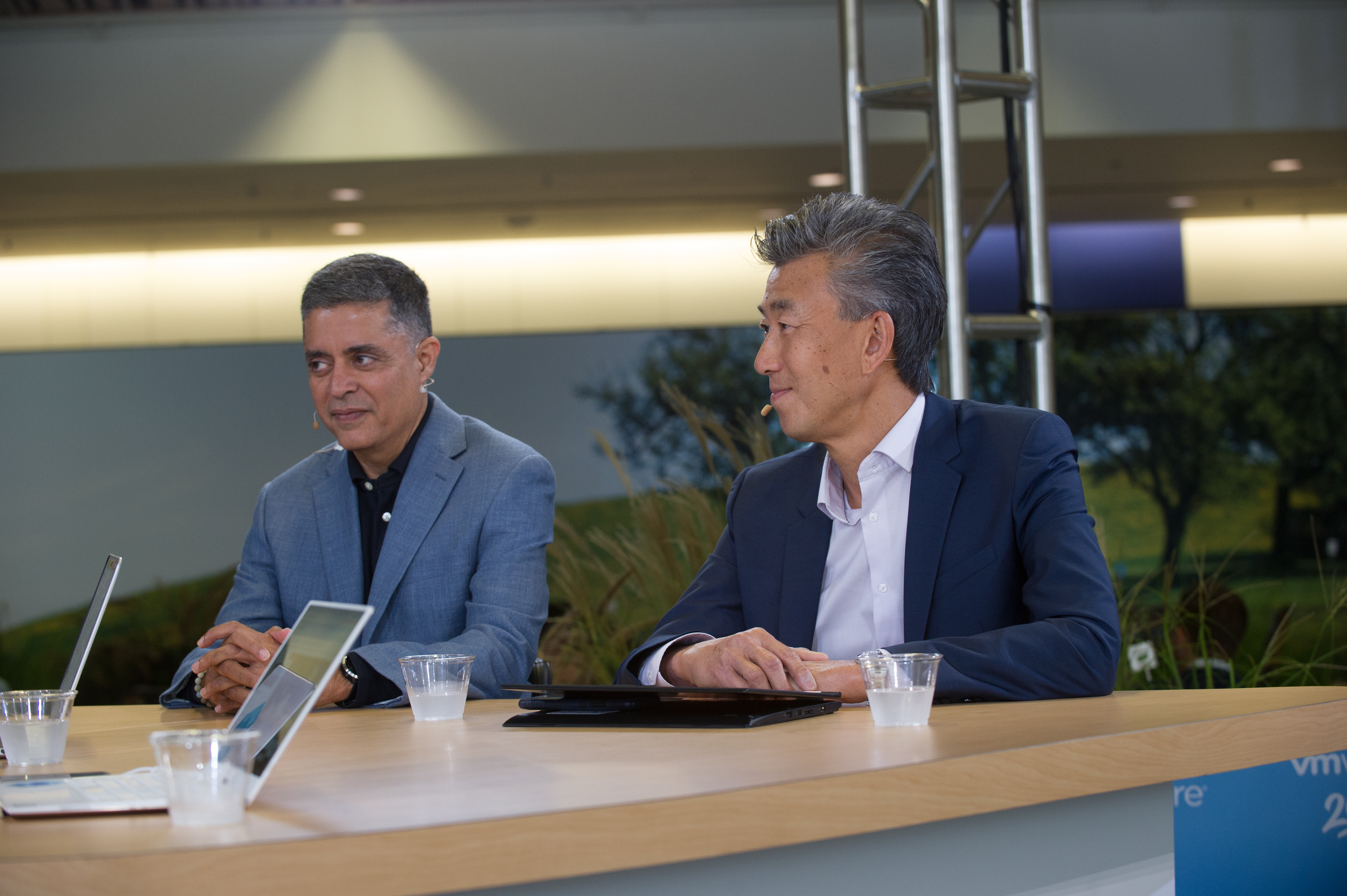 INFRA
INFRA
 INFRA
INFRA
 INFRA
INFRA
Distributed software applications are asking a lot of the computing network. It used to be just underlying plumbing, but the network now must dance along with real-time applications in multicloud and edge computing environments. Software-defined wide area networking has been proposed as the solution to other wonky modern-IT problems. Can it whack this one too?
To reign in the chaos of distributed, multicloud computing, there will be a “network cloud” as a kind of clearing house, according to Sanjay Uppal (pictured, left), vice president and general manager of the VeloCloud Business Unit at VMware Inc.
“That network cloud is going to be responsible for getting you to any final destination, whether it’s your nearby container or whether it’s running in some public cloud,” he said.
Uppal and Steve Woo (pictured, right), senior director of the VeloCloud Business Unit at VMware, spoke with Dave Vellante (@dvellante) and John Furrier (@furrier), co-hosts of theCUBE, SiliconANGLE Media’s mobile livestreaming studio, during the VMworld event in San Francisco. They discussed SD-WAN’s potential to enable distributed and real-time apps in hybrid environments (see the full interview with transcript here). (* Disclosure below.)
SD-WAN can act as a fabric connecting the client to the cloud to the container (a virtualized method for running distributed applications), according to Uppal. Its continuity along these routes makes it capable of securing the data sent through them.
“The advantage of the SD-WAN solution is, it’s actually a hybrid — it has a footprint on-premise but also has a cloud footprint,” Woo said. “In VeloCloud, we have this big network of cloud gateways, so you have the footprint on-prem and in the cloud to have distributed security.”
VeloCloud’s hybrid solution is ideal for temperamental real-time apps with features like voice and video. Its Dynamic Multipath Optimization continually monitors the performance and capacity of the different underlying resources. It can instantly recognize the business priority of apps and match the workload to the right resources, Woo pointed out.
“Because we get the visibility of what the container wants, we can both in real time, as well as a priority, figure out how the network should be configured,” Uppal stated. “A container could be right next to you; it could be in the cloud; far edge; thin edge. It’s not just a destination — it’s literally everywhere. And if that underlying fabric of the network doesn’t work, your digital transformation project for containers is not going to work either.”
Watch the complete video interview below, and be sure to check out more of SiliconANGLE’s and theCUBE’s coverage of the VMworld event. (* Disclosure: VMware Inc. sponsored this segment of theCUBE. Neither VMware nor other sponsors have editorial control over content on theCUBE or SiliconANGLE.)
Support our mission to keep content open and free by engaging with theCUBE community. Join theCUBE’s Alumni Trust Network, where technology leaders connect, share intelligence and create opportunities.
Founded by tech visionaries John Furrier and Dave Vellante, SiliconANGLE Media has built a dynamic ecosystem of industry-leading digital media brands that reach 15+ million elite tech professionals. Our new proprietary theCUBE AI Video Cloud is breaking ground in audience interaction, leveraging theCUBEai.com neural network to help technology companies make data-driven decisions and stay at the forefront of industry conversations.